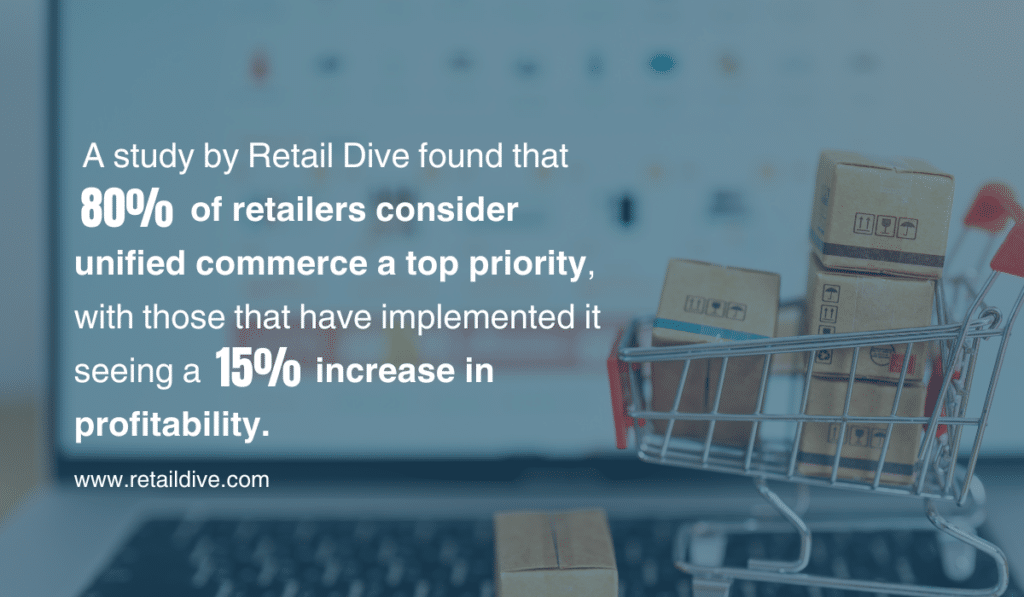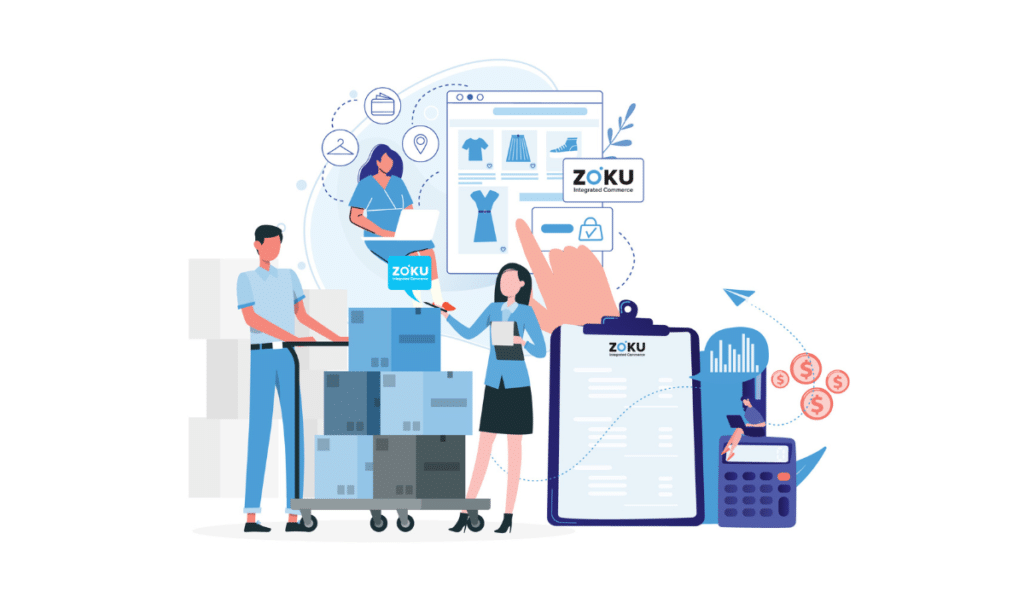The retail industry understands that without technology, there is no future for retail. That much is obvious. But what technology to invest in, and what the knock-on effects are, is less obvious. Over the years, many retailers have invested in individual ‘best-in-class’ systems like POS, CRM, inventory management, accountancy, procurement and e-commerce platforms. These systems were fit-for-purpose when they were introduced, but the reality is that the foundational processes on which this legacy tech is based, is struggling to keep up with the new gen of unified commerce.

The Trap of Integration: Why Retailers Rely on Legacy Systems
For many retail leaders and business owners, the solution seems obvious: integrate existing systems through APIs or middleware to try to achieve seamless omnichannel retail. This is often an effort to avoid operational upheaval and the time-consuming process of switching platforms. This can lead to what we call “The Integration Illusion”—the belief that because systems are influencing each other, that means they’re working together. In fact, trying to patch together ‘best-in-class’ softwares can leave retailers with a Frankenstein’s Monster of a setup. And, for multi-location retailers, this approach rarely delivers the results hoped for.
The danger here is that underlying problems are often difficult to detect. Rather than recognizing that inefficiencies stem from disconnected systems, they’re written off as operational missteps or isolated errors. But the real issue is the technology itself, and the longer it goes unaddressed, the more it costs retailers in time, resources, and ultimately, growth.
Common Symptoms of the Integration Illusion
Retailers relying on a patchwork of legacy systems often experience recurring issues that are mistakenly attributed to human error or process inefficiencies. In reality, these problems are tell-tale signs of systems that simply aren’t designed to work together.
Fragmented Data and Inaccurate Insights
Disconnected systems lead to data silos. When your POS, inventory, accounting, CRM, and e-commerce platforms aren’t talking to each other, critical business data becomes fragmented. Inventory may appear in stock online but be unavailable in-store, or sales data might not sync, leading to inaccurate reporting.
Stat: McKinsey estimates that disconnected data silos cost businesses over 20% of their productive capacity, significantly hampering growth (https://www.mckinsey.com).
Time-Consuming Manual Processes
When systems don’t communicate effectively, your employees are left to fill the gaps manually. This leads to inefficiencies like manually transferring data between systems, double-checking inventory discrepancies, and processing reports that should be automated. The more manual the process, the higher the risk for errors.
Stat: According to Smartsheet, employees spend nearly 40% of their time on manual processes, costing businesses about $14,500 per employee annually (https://www.smartsheet.com).
Inconsistent Financial Reporting
Financial data becomes unreliable when systems are not properly integrated. Whether it’s reconciling inventory costs, syncing online and offline sales, or managing margins, disconnected systems make it difficult to get a clear financial picture, leading to inaccurate forecasts and missed business opportunities.
Suboptimal Customer Experience
When store associates don’t have access to real-time information across all store and warehouse locations—whether it’s stock availability, customer purchase history, or pricing data—the customer experience suffers. Today’s customers expect quick service and accurate information, and when your systems can’t deliver, they notice.
Stat: Retailers who adopted mobile POS systems saw a 25% increase in customer satisfaction, directly tied to more efficient service (https://risnews.com).
The Hidden Costs of Sticking with Legacy Systems
Maintaining legacy systems often seems like the cost-effective choice, but in reality, the hidden costs are substantial. Retailers often fail to account for the growing complexity and fragility of their tech infrastructure as more systems are patched together. Each integration adds another layer of risk and expense, and over time, the costs of maintaining and troubleshooting these systems increase dramatically.
- Increased Maintenance Costs: The more you rely on patched systems, the more IT resources are required to maintain, update, and troubleshoot them.
- Downtime and Errors: Miscommunication between systems can lead to crashes, data discrepancies, and downtime, disrupting daily operations and costing you sales.
- Limited Scalability: As your business grows, these disjointed systems become bottlenecks, unable to handle increased volume or expand into new channels efficiently.
In short, while patching legacy systems might feel like a smart short-term solution, it becomes a long-term liability, limiting growth potential and causing ongoing operational pain.
The Advantage of Unified Commerce: Seamless Operations, Real-Time Insights
Unified commerce systems like Zoku offer a way out of the integration illusion. Rather than relying on multiple systems that need to be patched together, unified commerce platforms centralize key functions like POS, inventory, e-commerce, and CRM into a single ecosystem. This removes data silos, eliminates the need for manual processes, and ensures that information flows seamlessly across the business in real time.
For retailers, this means:
- Accurate, Real-Time Data: Inventory, sales, and customer information are synced across all channels, providing accurate data when you need it.
- Improved Decision-Making: With clear visibility into your operations, you can make faster, more informed decisions that drive growth.
- Enhanced Customer Experience and Associate Empowerment : Store associates can access up-to-date product and inventory information and customer data, delivering a smooth, personalized shopping experience.
Zoku uses NetSuite as the foundation for its unified commerce platform, managing accounting, inventory, customer, procurement, and product data in one system. Complemented by leading eCommerce platforms, Zoku’s state-of-the-art NetSuite POS, Inventory Management App, WMS, and Zoku Sync—the retail cloud integration platform—ensure seamless operations across all business functions with real-time visibility and a single source of truth.
Onboarding a Unified Commerce Platform: Easier Than You Think
One of the biggest concerns retailers have when switching to a unified commerce system is the potential for disruption. But with platforms like Zoku, the onboarding process is far less daunting than many expect. What’s important to understand is that Zoku doesn’t drastically change how your employees operate. The systems are intuitive, and the learning curve is relatively shallow, making it easy for staff to get up to speed.
The real difference lies in what’s happening behind the scenes. Instead of employees needing to manually reconcile data or rely on clunky integrations, Zoku’s platform ensures that all systems are communicating in real time. There’s no need for intermediary processes, and this efficiency drastically reduces the risk of errors— giving you control of your business from the enterprise.
Integrated Retail vs Unified Commerce
For some retailers, integrating existing systems can work, at least for a time. It might feel like the safer option, and it can get the job done well enough in the short term. But for most, the challenges that come with piecing together siloed systems eventually become too great to ignore. The need to upgrade to a truly unified, cloud-based commerce platform is not a question of if, but when. By making the switch to a unified system like Zoku, retailers can eliminate inefficiencies, improve decision-making, and unlock sustainable growth.


